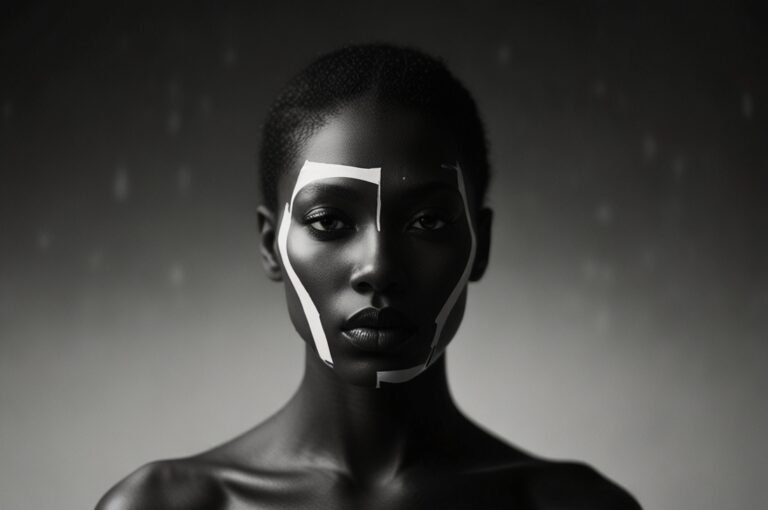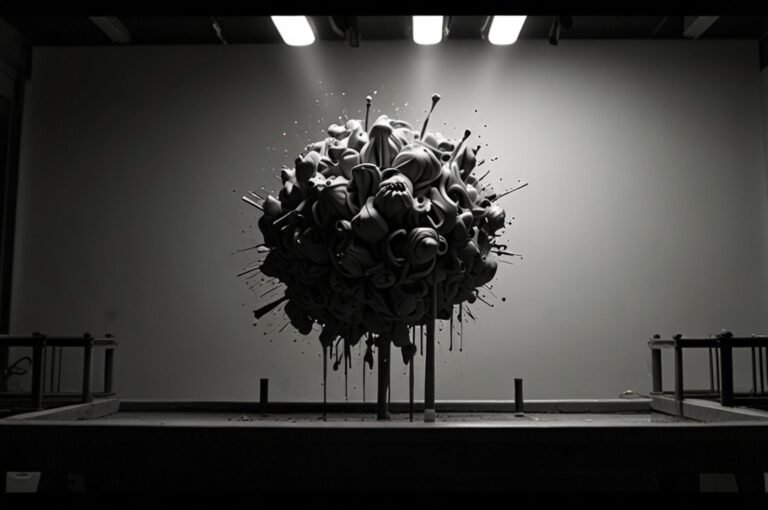Exploring Creative Styles: Which One Are You?
Creativity is an integral part of what makes us human, allowing us to express our individuality, solve problems, and bring new ideas into the world. While we often think of creativity as a monolithic concept, it actually encompasses a wide range of styles and approaches. Whether you are an artist, scientist, entrepreneur, or someone who simply enjoys creative activities, understanding your creative style can help you maximize your potential and find the most fulfilling way to express yourself. In this article, we will explore various creative styles, delving into their characteristics, strengths, and how to nurture them. We will also discuss how understanding your creative style can help you collaborate more effectively and unlock new ways to innovate.
The Importance of Understanding Creative Styles
Creative styles are the unique ways in which individuals approach the creative process. While some people may be spontaneous and intuitive, others may be methodical and detail-oriented. These differences are not only fascinating, but they also offer insights into how to leverage our strengths to achieve our creative goals.
Understanding your creative style can help you:
- Identify your strengths and areas for growth: Knowing your style can reveal which aspects of creativity come naturally to you and where you might need to put in more effort.
- Work more effectively: Whether you’re working solo or collaborating with others, understanding how you approach creativity can help you set up an environment and process that enhances your productivity.
- Improve collaboration: When working in a group, understanding the different creative styles of your team members can improve communication, reduce misunderstandings, and foster an environment where everyone can contribute their best ideas.
Divergent vs. Convergent Creatives
One of the most fundamental distinctions in creative styles is between divergent and convergent thinkers. These two styles represent different approaches to generating and refining ideas.
- Divergent Creatives: Divergent thinkers excel at generating numerous possibilities and thinking outside the box. They are often drawn to brainstorming sessions, thrive on open-ended challenges, and enjoy exploring unconventional solutions. Their creative process is characterized by flexibility, spontaneity, and the willingness to take risks.
- Convergent Creatives: Convergent thinkers are adept at narrowing down options and finding the best possible solution. They are analytical, detail-oriented, and often focus on refining and improving ideas. Their strength lies in their ability to assess the feasibility of different concepts and work toward a practical, well-thought-out outcome.
Both of these creative styles are important, and many individuals exhibit a mix of both, depending on the task at hand. The key is to recognize which style comes more naturally to you and how to harness it effectively.
The Planner vs. The Improviser
Another way to categorize creative styles is by looking at how people prefer to organize their creative process. Some people thrive on structure and planning, while others are most creative when they can act spontaneously.
- The Planner: Planners enjoy creating detailed outlines and setting clear goals before starting a project. They feel comfortable when they have a roadmap to follow and prefer to break down large tasks into smaller, manageable steps. Planners excel at staying organized and are often seen as reliable and methodical in their creative pursuits. Their style is well-suited for long-term projects that require consistent effort and careful consideration.
- The Improviser: Improvisers, on the other hand, prefer to dive headfirst into the creative process without rigid plans. They thrive on experimentation and adapt their approach as they go. Improvisers are often inspired by the moment, and their flexibility allows them to pivot and change directions as needed. This style is ideal for projects that require a high level of adaptability and where the outcome is not predetermined.
While Planners and Improvisers may seem like polar opposites, both approaches have their advantages. Planners can benefit from learning to embrace spontaneity, while Improvisers may find that a bit of structure can enhance their productivity.
The Visionary vs. The Craftsman
Creatives can also be divided based on whether they are more focused on the big picture or the finer details. This distinction is often seen in how individuals approach their creative work and the kinds of projects they find most fulfilling.
- The Visionary: Visionaries are driven by a desire to bring bold, innovative ideas to life. They are often focused on the big picture and enjoy working on projects that have a significant impact or tell a compelling story. Visionaries are idea generators who excel at seeing possibilities and creating a vision for the future. They may struggle with the more mundane aspects of a project, such as editing or refining their work, but their passion and enthusiasm are contagious.
- The Craftsman: Craftsmen, on the other hand, take great pride in their technical skills and attention to detail. They are focused on perfecting their craft, whether it’s creating a piece of art, writing, or building something. Craftsmen are patient and meticulous, often spending countless hours honing their skills and ensuring that every aspect of their work is of the highest quality. Their approach is methodical and precise, and they derive satisfaction from the process of creating something with care and expertise.
The Conceptual vs. The Practical
Creative styles can also be categorized based on whether individuals are more conceptually or practically oriented. This distinction can influence how people approach problems and the types of solutions they generate.
- The Conceptual Creative: Conceptual creatives are drawn to abstract thinking and enjoy exploring ideas that may not have immediate practical applications. They are comfortable with ambiguity and often work on the fringes of what is known or accepted. Conceptual creatives excel at coming up with bold, visionary ideas and are not afraid to take risks. Their work often involves exploring new theories, challenging the status quo, or pushing boundaries in their field.
- The Practical Creative: Practical creatives are more focused on creating solutions that can be applied to real-world problems. They are driven by the desire to make a tangible impact and often prefer to work on projects that have a clear purpose and benefit others. Practical creatives excel at finding efficient and effective ways to solve problems, and they enjoy working within constraints to come up with innovative yet feasible solutions.
Both conceptual and practical creativity are essential, and many successful projects require a balance of both. Conceptual creatives provide the bold ideas, while practical creatives figure out how to bring those ideas to life in a meaningful way.
Identifying Your Creative Style
Understanding your creative style can be incredibly empowering, as it helps you identify the conditions in which you are most productive and fulfilled. Here are some questions to help you identify your style:
- How do you approach new projects? Do you prefer to dive in spontaneously, or do you like to create a plan first?
- Do you focus more on generating ideas or refining them? Are you energized by brainstorming sessions, or do you prefer to analyze and improve existing ideas?
- Are you more interested in the big picture or the details? Do you enjoy creating bold visions, or do you find satisfaction in perfecting every aspect of your work?
- Do you lean towards abstract or practical thinking? Do you enjoy exploring new concepts without immediate application, or do you prefer to work on problems that have a direct impact?
Answering these questions can give you a clearer understanding of your creative preferences and how to leverage them effectively.
Nurturing Different Creative Styles
No matter what your creative style is, there are ways to nurture and enhance your abilities. Here are some strategies tailored to different styles:
- For Divergent Creatives: Practice freewriting or brainstorming sessions to generate new ideas without judgment. Surround yourself with diverse influences, such as art, music, or cultures, to stimulate new ways of thinking.
- For Convergent Creatives: Focus on structured problem-solving exercises, such as puzzles or logic games, to refine your ability to analyze and evaluate ideas. Practice narrowing down broad concepts to actionable steps.
- For Planners: Embrace improvisational activities such as sketching without a plan or cooking without a recipe. Allow yourself to experiment without fear of failure, which can help you develop greater flexibility.
- For Improvisers: Set small goals and create timelines to give your creative projects some structure. This can help you stay on track and ensure that your ideas are brought to fruition.
- For Visionaries: Collaborate with people who excel at implementation. Surround yourself with Craftsmen who can help bring your big ideas to life, and be open to refining your vision based on their feedback.
- For Craftsmen: Work with Visionaries to expand your perspective and learn to embrace the value of big ideas, even if they seem impractical at first. Allow yourself to explore new directions without needing everything to be perfect.
- For Conceptual Creatives: Engage with practical projects to understand how abstract ideas can be applied in the real world. This can help you ground your creativity and make a tangible impact.
- For Practical Creatives: Take time to explore abstract thinking through activities such as reading speculative fiction or engaging in philosophical discussions. This can help you expand your perspective and consider new possibilities.
Creative Collaboration: Leveraging Different Styles
Creativity often thrives when different styles come together in collaboration. Successful creative teams understand how to leverage the strengths of each member to achieve a common goal.
- Balance Divergent and Convergent Thinkers: Divergent thinkers are essential for generating a wide range of ideas, while convergent thinkers are necessary for selecting and refining the best ones. In a collaborative setting, it’s important to create space for both styles to shine.
- Pair Visionaries with Craftsmen: Visionaries excel at creating bold ideas, while Craftsmen are skilled at executing them with precision. By working together, they can bring a project from concept to reality.
- Mix Planners with Improvisers: Planners can provide the structure that Improvisers need, while Improvisers can bring spontaneity and adaptability to the process. This balance can lead to a more dynamic and effective creative process.
The Role of Environment in Shaping Creative Styles
The environment plays a significant role in how different creative styles flourish. For example:
- Planners may benefit from organized, quiet spaces with minimal distractions, where they can focus on their detailed plans.
- Improvisers may find inspiration in dynamic environments, such as coffee shops, parks, or bustling workplaces, where they can draw from the energy and unpredictability of their surroundings.
- Visionaries may thrive in environments that provide space for brainstorming, such as whiteboards, sticky notes, or collaborative digital tools.
- Craftsmen may prefer environments with high-quality tools and materials, where they can focus on the craftsmanship of their work.
Adapting Your Style for Different Contexts
While you may have a dominant creative style, it’s important to recognize that different projects and situations may require different approaches. Being able to adapt your style based on the context can make you a more versatile and effective creative.
- When working on a tight deadline: Convergent thinking and planning may be more effective, as they allow you to focus on the most efficient way to achieve the goal.
- When exploring new ideas: Divergent thinking and improvisation can be valuable, as they encourage you to think beyond conventional solutions and generate a wide range of possibilities.
- When collaborating: Being aware of your own creative style and the styles of others can help you navigate group dynamics more effectively. For example, if you’re a Planner working with Improvisers, understanding their need for spontaneity can help you find a balance that works for everyone.
Conclusion: Embracing Your Creative Style
Creativity is a deeply personal and unique aspect of who we are. By understanding your creative style, you can gain valuable insights into how to best approach your work, collaborate with others, and continue growing as a creative individual. Whether you are a Visionary, Craftsman, Planner, Improviser, Divergent or Convergent thinker, your creative style is an asset that, when nurtured, can lead to incredible achievements and fulfillment.
Remember that no single style is better than another—each has its own strengths and challenges. The key is to embrace your natural inclinations while remaining open to learning from other styles. By doing so, you can continue to expand your creative potential and bring your unique vision to life.






